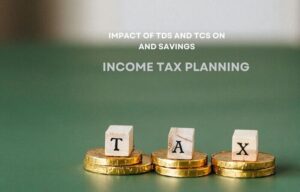How Term Insurance Costs Vary by Age & Policy Type?

Term life insurance is a vital financial resource that covers your loved ones in the event of untimely accidents. However, you need to know how premiums differ in age and policy to make a smart choice. Younger applicants have lower premiums, but older applicants pay more as their health risk is higher.
Further, the policy type you select, i.e., decreasing or level term, also affects the premium. When contrasted, these rates provide optimal coverage at the lowest cost.
Factors Affecting Term Insurance Premiums
Insurers consider numerous factors while computing the premium to ensure that the premium reflects the degree of risk accurately. Below are the key factors that influence term insurance premiums:
1. Age
Age is a significant factor in determining premiums. Younger policyholders usually pay lower premiums as the risk is lower. As you age, the likelihood of health issues increases, raising the insurer’s risk. This results in higher premiums for older applicants.
2. Policy Type
The premium is directly tied to the insurance type. Level-term insurance has the same premium throughout the term. Increasing term insurance increases premiums over time. Decreasing term insurance reduces premiums as the coverage decreases.
3. Coverage Amount
The extent of coverage determines the premium rate. More amounts insured mean more premiums for more payout risk. More coverage provides maximum security but at a cost. The perfect balance ensures the premium remains in check.
4. Policy Tenure
Longer terms eliminated with policies usually cost more. A longer tenure places a greater burden on the insurer to make a payout. Short-term policies cost less but offer limited protection. Balancing tenure and coverage helps optimize the premium.
5. Health and Lifestyle
Your habits and health are the core of premium determination. Smokers and health-compromised individuals have to pay more because they are more at risk. Living a healthy life and getting regular health checkups can reduce the expense.
Term Insurance Cost Comparison by Age Group
Term insurance prices strongly correlate with policyholder age. Most young people pay lower premiums, and older applicants pay more because of extra risk factors.
The following is a comparison of yearly premiums for a ₹50 lakh term insurance policy for different age groups:
| Age Group | Annual Premium (₹) |
| 20-25 | ₹5,000 |
| 26-30 | ₹5,500 |
| 31-35 | ₹6,500 |
| 36-40 | ₹8,000 |
| 41-45 | ₹11,000 |
| 46-50 | ₹15,000 |
| 51-55 | ₹20,000 |
| 56-60 | ₹30,000 |
Read More: The Simple Guide to Term Insurance: Protecting What Matters Most
Term Insurance Cost Comparison by Policy Type
Term life insurance policies come in various forms, each designed to meet specific financial needs. The cost of these policies varies based on their structure and features. Below is a comparison of common-term insurance types and their cost implications:
| Policy Type | Definition | Cost Implications | Benefit |
| Annual Renewable Term (ART) Insurance | Provides coverage for one year at a time, with the option to renew annually. | Lower initial premiums but increase yearly as the insured ages. | Affordable at first; flexible short-term option. |
| Level Term Insurance | Provides death protection for a level term (e.g., 10, 20, or 30 years) with level premiums. | More than ART premiums, but are level over the term. | Inexpensive for long-range planning. |
| Return of Premium (ROP) Term Insurance | Pay a death benefit and return premiums paid if the insured survives to the end of the term. | Significantly higher due to the refund feature. | Combines protection with savings. |
| Decreasing Term Insurance | Features a death benefit that decreases over time, often linked to a mortgage or loan. | Lower premiums due to reduced coverage amount. | Optimal for diminishing financial responsibilities like mortgages. |
Tips to Lower Term Insurance Premium Costs
Lowering your life insurance premiums helps you save money while securing financial protection. Simple steps can reduce costs without compromising coverage. Here are effective tips to minimize your term insurance expenses:
- Buy Early: Purchasing term insurance at a young age reduces premiums. Younger individuals face lower health risks, leading to cheaper coverage. Locking at a lower rate helps you save in the long run.
- Maintain a Healthy Lifestyle: Insurers consider health factors like smoking, drinking, and weight. Quitting smoking and eating a healthy diet reduces premium rates. Periodic health check-ups also improve bargains.
- Choose the Right Policy Type: Compare policies and select the one that best suits you. Level-term provides certainty, whereas reducing term insurance lowers costs over time. The correct policy is to balance protection with price.
- Opt for a Longer Policy Term Early: Longer-term policies secured at a younger age lock in lower rates. This protects you from future premium increases due to aging or health changes.
- Avoid Unnecessary Riders: Riders that add critical illness or accidental death benefits affect premiums. To save expenses, choose only riders that fit your financial blueprint.
- Pay Annually Instead of Monthly: Prepaid annual payments are less costly than monthly installments. The insurer can reward a bulk purchase discount, cutting down on expenses.
Selecting the appropriate term life insurance considers how policy type and age influence premiums. By shopping around and considering your money objectives, you can obtain a policy that offers good protection without overpaying. Taking the time to review these factors can provide long-term financial security for you and your loved ones.

Pranab Bhandari is an Editor of the Financial Blog “Financebuzz”. Apart from writing informative financial articles for his blog, he is a regular contributor to many national and international publications namely Tweak Your Biz, Growth Rocks ETC.








